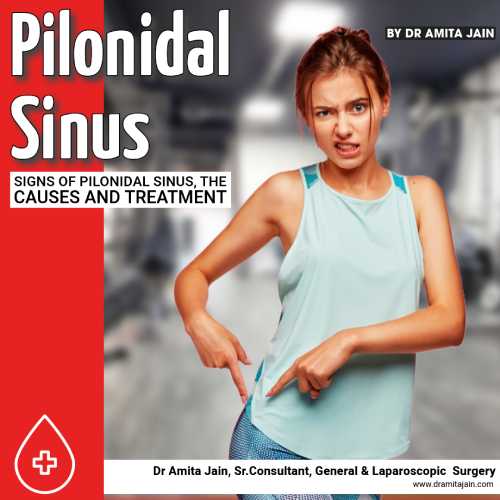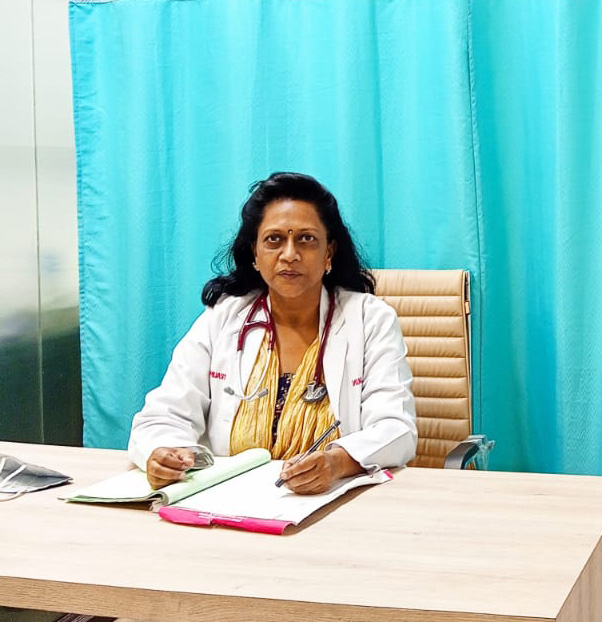In the hustle and bustle of today’s hectic world, health often takes a back seat as we juggle multiple responsibilities. However, it’s crucial to prioritize our well-being, and one aspect that often goes unnoticed is the pilonidal sinus. A pilonidal sinus, also referred to as a pilonidal cyst, is a condition characterized by the development of a small tunnel or cavity in the skin, specifically at the upper part of the buttocks, adjacent to the tailbone. This occurs when hair becomes trapped around the crease of the buttocks, potentially leading to the formation of an abscess. Pilonidal sinuses can vary in severity, ranging from asymptomatic to causing significant discomfort and pain.
It affects mostly young adult males and has a tendency to recur. Those who spend extended periods sitting are at a higher risk of developing pilonidal cysts. Men are more prone to this disease than women.
Let’s understand the symptoms, causes and treatment from eminent surgeon in Delhi for pilonidal sinus, Dr Amita Jain from this article.
Why does it Happen?
Pilonidal cysts can develop due to a combination of factors, although the precise cause isn’t fully understood. One contributing factor is the presence of ingrown hairs in the buttock crease, leading to a skin infection and subsequent cyst formation. This condition often arises post-puberty due to hormonal changes, increased hair growth, and the friction generated by activities like prolonged sitting. When friction forces hair to penetrate the skin, the body perceives it as a foreign object and triggers an immune response, similar to reacting to a splinter. This immune response results in the formation of a cyst around the trapped hair, sometimes leading to the development of multiple sinuses connecting beneath the skin.

What are the Signs and Symptoms?
If left untreated, a pilonidal cyst can escalate into an abscess or a sinus cavity, indicating worsening skin infection. Initially, you might only notice a small dimple-like depression on the skin surface. However, once infected, it can progress into a cyst (a closed sac filled with fluid) or an abscess (inflamed tissue with pus accumulation). When infection sets in, you may experience:
i) Pain in the upper buttocks area, exacerbated by sitting.
ii) A depression or dimple at the top of the buttock cleft.
iii) Swollen, tender, and reddened skin near the top of the buttocks.
iv) Draining pus or blood from an abscess, often with a foul odor.
v) Hair protruding from the lesion.
vi) Fever and chills in rare instances.
vii) Development of multiple sinus tracts or skin openings.
Treatment Plan
Treatment for pilonidal cysts depends on the severity of the case.
- Conservative treatment: In instances where the cyst is diagnosed early, isn’t causing severe pain or inflammation, a broad-spectrum antibiotic may be prescribed to alleviate infection and discomfort. A broad-spectrum antibiotic is a medication that targets a wide range of bacteria, both gram-positive and gram-negative, making it effective against various types of bacterial infections. Although antibiotics can ease inflammation, they don’t cure the cyst itself. Patients are typically advised to maintain good hygiene, regularly remove hair from the area, and follow up with their doctor for monitoring.
- Lancing: Lancing is a medical intervention aimed at alleviating symptoms related to abscesses (pockets of pus within sinuses). Before the procedure, the doctor administers a local anesthetic to minimize discomfort. Using a scalpel, they carefully open the abscess, removing hair, blood, and pus. The cleaned wound is then packed with sterile dressing, promoting inside-out healing. Typically, the wound heals within four weeks, and additional treatment is often unnecessary. This outpatient procedure is commonly recommended for pilonidal sinus treatment when other measures fail.
- Phenol Injection: In this treatment, doctors administer local anesthesia before injecting phenol, an antiseptic compound, into the cyst for treatment. The procedure may require multiple injections to harden and close the lesion.
- Surgery: For recurring or multiple pilonidal sinus infections, surgery is often recommended. A local anesthetic is given before the procedure. The surgeon removes the sinus either by cutting it out or opening it up to remove pus and debris. Wound is then closed by stitches. It could be either a traditional surgery or endoscopy.
Finally, understanding the symptoms, causes, and treatment options for pilonidal sinus, ranging from conservative measures to surgical intervention, enables effective management of this condition, alleviating discomfort and preventing recurrence for patients.

Dr Amita Jain is a surgeon with the highest degree of professional competence, precision and surgical craftsmanship. Performed all complicated general surgery procedures with in depth knowledge of invasive and few minimal invasive and onco surgical techniques. Underwent special training in trauma, executed various trauma-related complex life-saving neurosurgical procedures, reconstructed injured mangled limbs and performed vascular and reconstructive procedures with critical care.
Dr Amita Jain holds 28 plus years of rich experience in Trauma and General Laparoscopic Surgeries (including Gallbladder stone removal, appendix removal, hernia repair surgery, piles and fissure surgeries). She was the Professor Surgery of at the Army College of Medical Sciences and Base Hospital Delhi Cantt. In 1994 she was commissioned as Surgeon under the United Nations Mission in Congo. From 2020 to 2022, she worked with Bansals Hospital. Currently, Dr Amita Jain is the Senior Consultant, (Speciality: General and Laparoscopic Surgeon) at Artemis Lite Hospital, New Delhi and Sr. General and Laparoscopic Surgeon at Rainbow Children Hospitals, Malviya Nagar, Delhi.